Homegrown Vortex Settling Basin tech removes sediment from water, boosting dam capacity, water quality, and rural water security in South Africa.
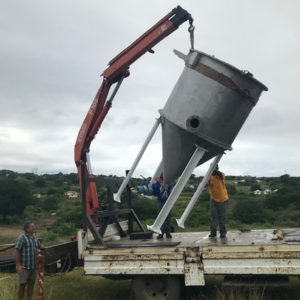
Fabrication and construction of the plant was done in Port Elizabeth and then transported to Kwa-Zulu Natal
Developed in South Africa through the Water Research Commission, the Vortex Settling Basin (VSB) is a water treatment system that will remove sediment, suspended solids, and other pollutants from water.
South Africa has a history of building dams to address water security needs and to provide essential bulk water supply to its population. But several of these large dams are steadily losing storage capacity each year due to soil erosion and land clearance, with many dams experiencing increased levels of siltation.
In response to this, the Department of Water and Sanitation (DWS) appointed the Water Research Commission (WRC) to develop the National Siltation Management Strategy for Large Dams (NatSilt Programme).
The NatSilt Programme is funded by the DWS through its Water Resource Infrastructure Management branch, which is responsible for the asset management and infrastructure maintenance of 276 government water schemes across the country, including over 325 large state dams that make up more than 90% of the country’s total storage capacity.

Lesego Gaegane, senior project manager NatSilt programme, WRC.
The programme is designed to develop solutions to address siltation within dams while embedding sustainability, climate resilience, and capacity building at the heart of South Africa’s water sector.
“NatSilt takes a holistic, system-wide view, tackling upstream erosion, catchment degradation, and infrastructure vulnerability through proactive and co-ordinated strategies. By addressing siltation not only at the dam wall but across the entire water value chain, the programme directly supports long-term water security. Its success lies in bridging the strategic, technical, ecological, operational, and socio-economic dimensions of sediment management, while also investing in skills development and institutional capacity,” explains Lesego Gaegane, senior project manager: NatSilt programme, WRC.
Vortex setting basin (VSB)
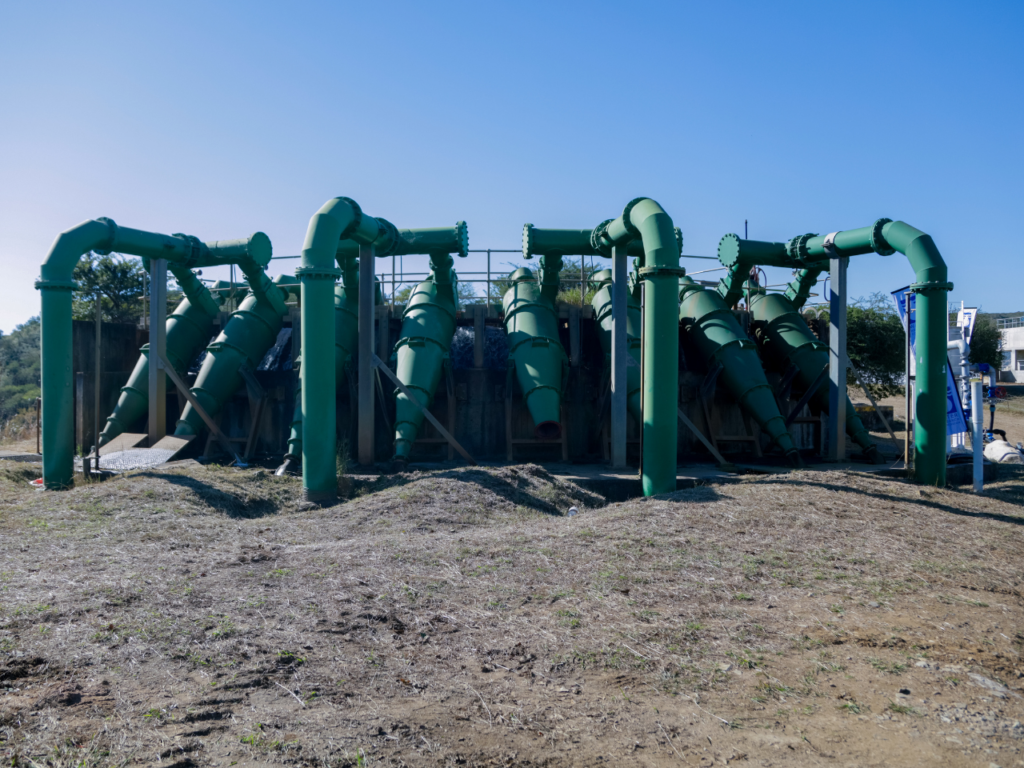
Before the VSB, the current extrusion was done by hydro-cyclones
She adds that the VSB is a tangible example of this innovative, impact-driven approach. It is a technological intervention.
The VSB is a type of water treatment system that utilises a vortex flow pattern to remove sediments, suspended solids, and other pollutants from water. It operates on the principle of centrifugal force, allowing heavier particles to settle at the bottom of the basin while cleaner water is discharged from the top. The VSB effectively removes heavy sediment particles through its vortex action, causing the sediment to settle in a cone shape. These particles can then be extracted by gravity, while the clearer water flows out over a discharge weir. This action results in up to 90% efficiency, allowing more water to be treated with less energy input, less chemicals and minimal maintenance.
“Developed in South Africa through WRC-funded research, refined through rigorous industrial laboratory testing, and now successfully demonstrated in the field, the VSB story is a powerful example of local innovation in action,” adds Gaegane.
Its origins lie is a WRC study that is nearly 20 years old entitled ‘Considerations for the Design of River Abstraction Works in South Africa’. A significant portion of the study focussed on the development of guidelines to effectively design the hydraulic systems of river abstraction.
These guidelines have been used for the designs of many of the new abstraction works and this is probably one of the research success stories of the WRC. However, there was a gap in guidelines for smaller extraction systems that had pumping capacities lower than 100 litres per second. Therefore, another study took place between 2017 and 2020 on small river abstractions and irrigation systems.
“The outcomes of that study was the VSB technology. Our technology transfer manager, Thabo Mthombeni, flagged the technology for the NatSilt Programme. We did a lot of due diligence in terms of investigating any registered intellectual property for similar technologies and found nothing registered,” says Gaegane.
The VSB technology represents the WRC’s mission to turn research into scalable, real-world solutions for the water sector — a full research-to-impact cycle. This initiative supports the WRC’s broader vision of promoting climate resilience, sustainability, and homegrown innovation.
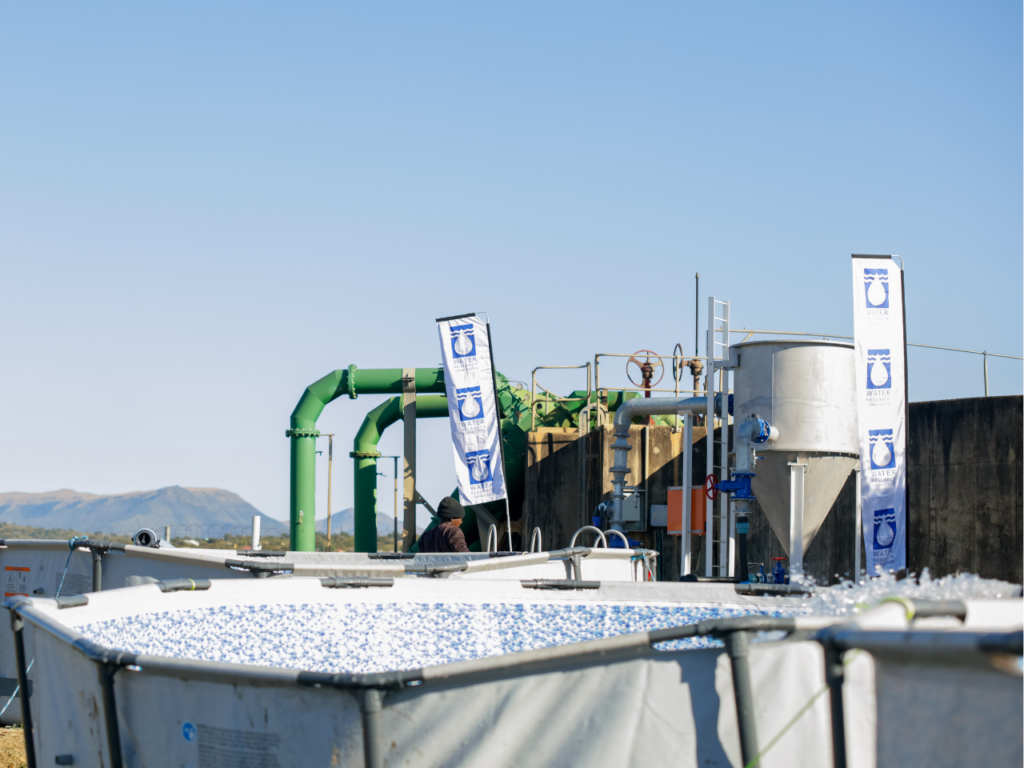
The VSB is a type of water treatment system that utilises a vortex flow pattern to remove sediments, suspended solids, and other pollutants from water
“The VSB is more than a technological advancement – it’s a symbol of what’s possible when South African ingenuity, science, and community needs align. It proves that smart, locally developed solutions are not only possible, but within our reach,” states Gaegane
She adds that the VSB is particularly suited to small rural abstraction systems like farms and small municipalities that pump less than 100 litres per second or a maximum of 8.6 Mℓ/day.
“It’s designed for fine, non-cohesive sediment and requires no energy input and minimal upkeep, making it suitable for resource-limited municipalities. With the VSB, small river abstraction systems can abstract water and purify it to cleaner quality, without feeding poor quality water that is sediment laden to water treatment works.”
Sand and silt, although naturally occurring, can lead to significant operational and maintenance problems in water infrastructure, particularly in systems that draw water from rivers, dams, or boreholes. These fine particles can cause pump wear and damage as well as clogging and blocking of pipelines, valves and filters. Over and above the negative impact on water quality, sand and silt can also damage downstream equipment such as meters, sprinklers and nozzles.

Demonstration site

The Thukela River abstraction point near Middledrift, Thukela River in KwaZulu-Natal was selected as a demonstration site to prove the real-world value of the VSB
The Thukela River abstraction point near Middledrift, Thukela River in KwaZulu-Natal was selected as a demonstration site to prove the real-world value of the VSB.

DWS Deputy Minister, David Mahlob
DWS Deputy Minister, David Mahlobo, was present at the official start of the demonstration period for the VSB technology. He explained that Madungela was chosen for the demonstration for several reasons.
“The large contributing catchment downstream of the existing Spioenkop Dam results in high sediment concentrations. The pump station abstracts raw water directly from the Thukela River and has no gravel trap, so the current sediment extrusion is by hydro-cyclones. Therefore, a good comparison with VSB performance will be possible.”
The VSB has a pump capacity of 8.6 Mℓ/day and will benefit a wide range of stakeholders, particularly those reliant on surface water abstraction for agricultural, municipal, and industrial purposes. The VSB is a buy-and-use system, no structural modifications are
Once installed, it is ready to operate. It increases the efficiency of the pumping station by separating the silt from water abstracted from the Thukela River. It also decreases the amount of chemicals used when pumping water to the treatment plant, with minimal maintenance needed. As it is more efficient than hydro cyclones, there will be more water to treat, thus increasing water security in the area. The technology will also ensure good water quality because the turbidity of the water will be addressed.
The demonstration will last for 12 months, in order to collect data for a full hydrological year. The WRC will then create operational guidelines and may modify the VSB design, depending on the data collected.
Communities
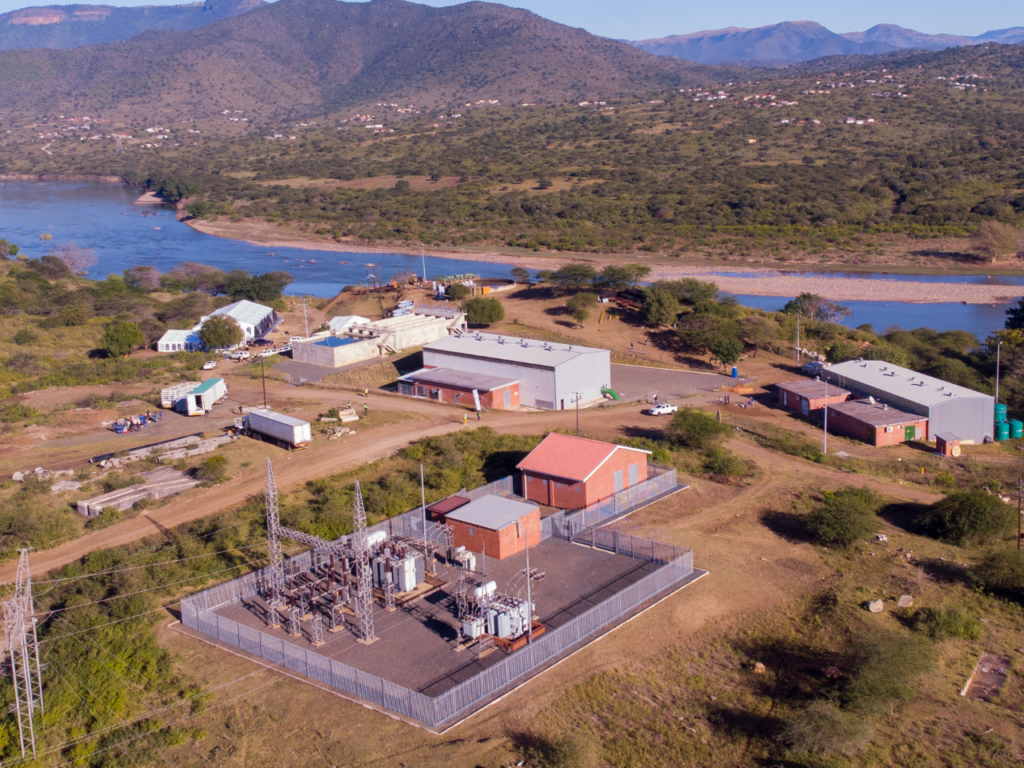
The pump station abstracts raw water directly from the Thukela River
Concluding his speech at the handover event, Deputy Minister David Mahlobo urged the local community to protect the VSB as it will be beneficial to them.
“Beyond technical innovation, the VSB initiative also delivers substantial socio-economic value through local job creation during installation and maintenance phases, skills transfer and training for municipal staff and technicians, and support for local small businesses through sourcing and fabrication. It is an investment in resilient, cost-effective infrastructure to meet the demands of a changing climate.”
The Vortex Settling Basin (VSB) has the potential to drive sustainable development and empower rural communities by stimulating local economies through its commercialisation and localisation; creating skilled jobs, supporting local manufacturing, and fostering a new industry around its production and deployment.
Community members from the surrounding area assisted with assembling the VSB plant, and local suppliers provided certain materials.
“Involving and engaging local community members contributes significantly to the success of the project. There is a great sense of ownership amongst the community, with some members trained to take water samples,” says Gaegane.
“Often, international technology is imported and then tailored to South African context, however, this South African developed technology is by South Africa for South Africa and this localisation effort not only reduces dependency on imported solutions but also fosters a sense of ownership within communities. Furthermore, as the VSB gains recognition, it opens avenues for partnerships between the government, the private sector, and community organisations, ultimately ensuring that the benefits of improved water management are distributed equitably,” she maintains.

Dr Jennifer Molwantwa, CEO, WRC
“This kind of work is critically important for the WRC, as it demonstrates our ability to translate theoretical scientific innovations into practical applications – not just at laboratory scale, but also in real-world settings. We are hopeful that this innovation will culminate in an economy where all municipalities and bulk water suppliers recognise and adopt it as a groundbreaking technology that has the potential to significantly improve the efficiency and capacity of water treatment systems across the country – particularly benefiting rural communities, where access to reliable and sustainable water services is often limited,” concludes Dr Jennifer Molwantwa, CEO, WRC.
The WRC plans to recommend the replication of the VSB model in other sediment-impacted catchments across the country, using lessons from the demonstration site to refine operational guidelines and inform national policy. The VSB forms part of South Africa’s broader commitment to sustainable water resource management, circular economy principles, and inclusive development.
What is a vortex?
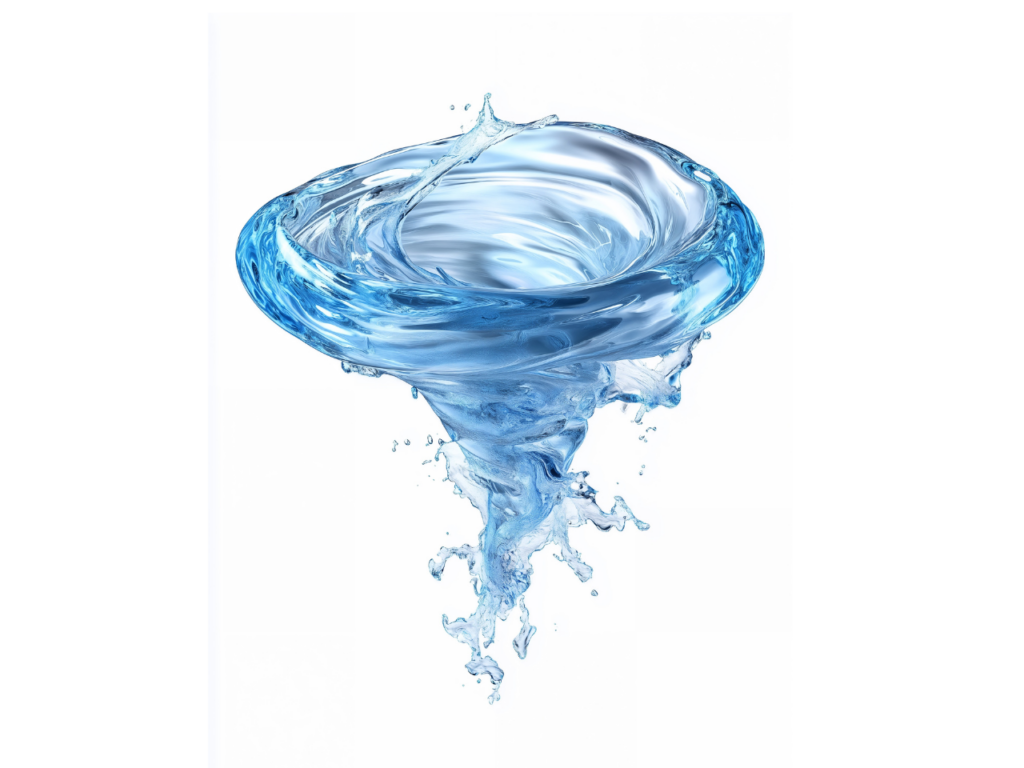
In fluid dynamics, a vortex (plural: vortices or vortexes) is a region in a fluid in which the flow revolves around an axis line, which may be straight or curved. Vortices form in stirred fluids, and may be observed in smoke rings, whirlpools in the wake of a boat, and the winds surrounding a tropical cyclone, tornado or dust devil.
Key benefits of the VSB technology include:
- No electricity required – powered purely by natural hydraulic flow
- High sediment removal efficiency
- Minimal water loss (approx. 8%)
- No moving parts, requiring minimal maintenance
- Scalable design adaptable to various capacity needs.










